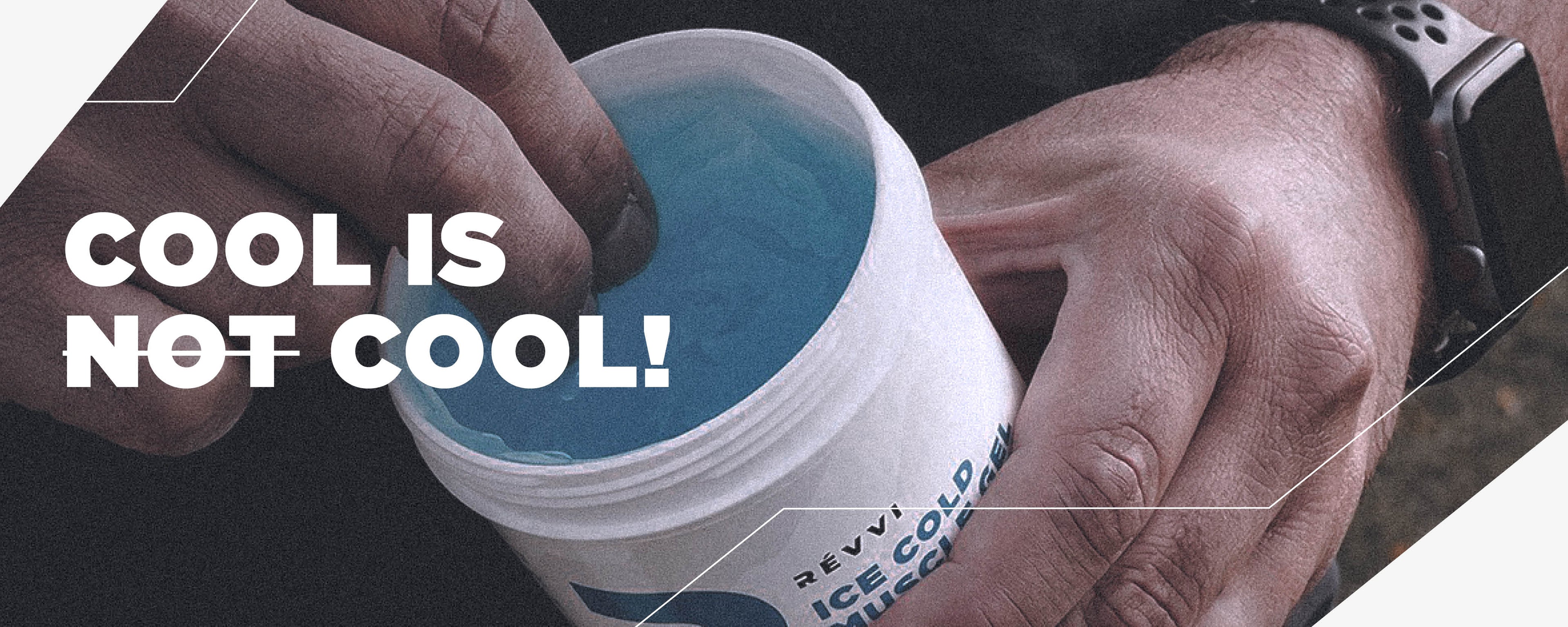COOL IS NOT COOL

Learn to recognize your body's signals.
When exercising you use your muscles much more than they are used to. It can happen that you have muscle pain afterwards. Muscle pain during exercise occurs because the strain on the body increases during exercise, causing tiny hairline cracks in your muscle fibers and tendons. This is normal and can do no harm at all!
A good one warm up and enough rest Afterwards, it is very important to repair your damaged muscles and therefore prevent muscle complaints during exercise!
If you increase the load on your body without giving your damaged fibers enough time to recover, you will destroy even more fibers during the next workout, further weakening the affected muscle or tendon.
At a certain point, so many fibers are damaged that muscle stiffness and fatigue progress to long-term pain complaints, which can lead to an inflammatory reaction.
Read and apply the tips below in your weekly planning and try to prevent muscle and tendon inflammation.
3 Simple Tips to Avoid Inflammation!
1. Tax / Taxability
The load capacity is the maximum force that your body can handle while load is the effective force that your body experiences during sports. If the load is therefore greater than your load capacity, there is a great chance that injuries will occur (in the long term). It is therefore important to increase the load capacity in function of your personal goals (e.g. core stability exercises) but also to adjust the (sports) load in such a way and gradually build it up.
2. A prepared muscle is worth two!
Muscle pain that occurs after exercise can be prevented by a good warm-up and by inserting a recovery period. Be sure to take the time to read our previous 2 blogs, here you will find useful tips on both topics!
3. Vary your movement patterns.
Make sure you vary your movements sufficiently during exercise so that your muscles receive sufficient stimuli and do not “adapt” to a certain pattern. Your muscles will then become less flexible, which increases the chance of injuries. With variation, you will not always strain the same muscles and muscle groups and your body will become stronger, your resilience will increase!
Still got an infection, what now?
In acute injuries, swellings and inflammations you should always cool. Do not use heat, because this can worsen the pain and the problem. Heat is applied after the acute phase, when the recovery phase begins.
By cooling an injury in the acute phase, you reduce the blood circulation in that area. This can reduce possible inflammation and swelling, this also helps to relieve the pain.
When cooling your inflamed muscles, we recommend a combination of: cold pack with the ice cold cooling muscle gel to apply. Whereby the RÉVVI muscle gel activates a long-lasting and deep penetrating effect around the inflamed muscle and the cold pack has a more superficial (and pain-relieving) effect.
Be sure to read the full information about both products on our website and apply this tip in the first 5 days of your inflammation: "Apply a thick layer to the painful area, wrap it in cling film and leave to work for a long time (approx. 12 hours) for deep and effective healing."




Leave a comment
All comments are moderated before publishing.